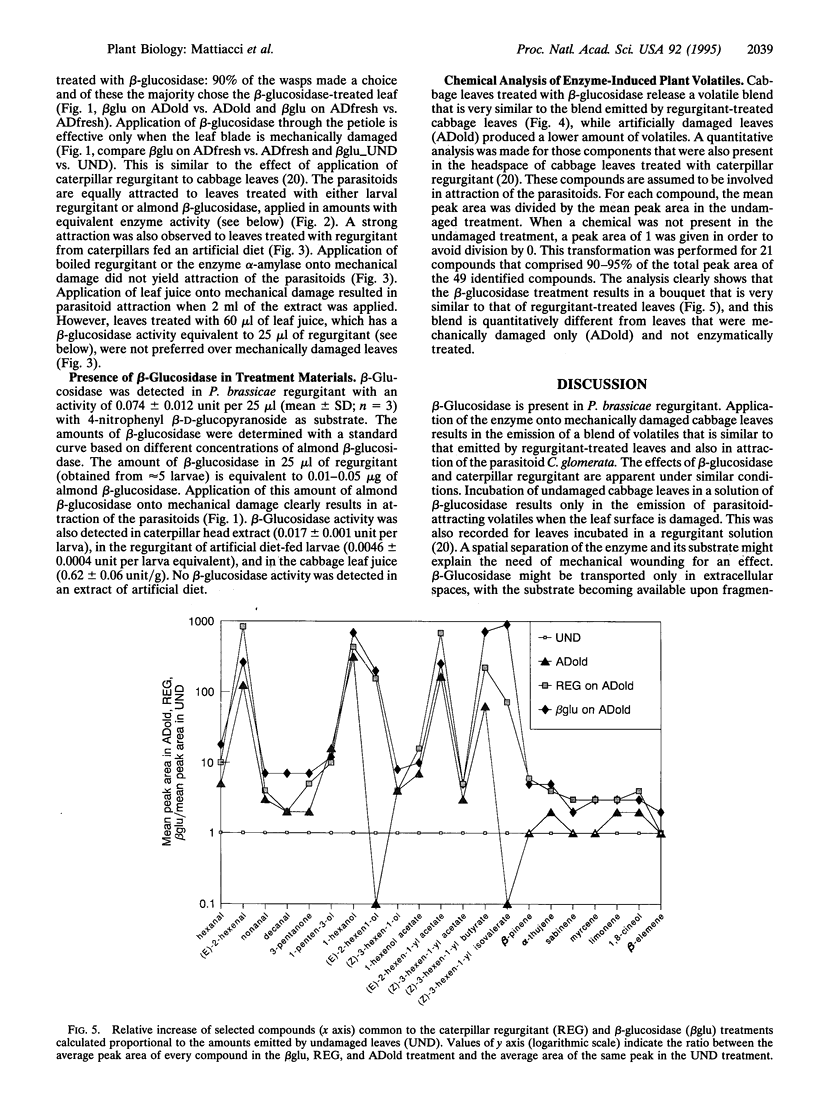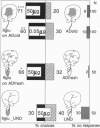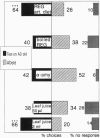Abstract
Cabbage plants respond to caterpillar (Pieris brassicae) herbivory by releasing a mixture of volatiles that makes them highly attractive to parasitic wasps (Cotesia glomerata) that attack the herbivores. Cabbage leaves that are artificially damaged and subsequently treated with gut regurgitant of P. brassicae caterpillars release a volatile blend similar to that of herbivore-damaged plants. We demonstrate the presence of beta-glucosidase in P. brassicae regurgitant. Leaves treated with commercial beta-glucosidase (from almonds) release a volatile blend similar to that of leaves treated with P. brassicae regurgitant. In a flight bioassay, leaves treated with almond beta-glucosidase are highly attractive to the parasitic wasp C. glomerata. Furthermore, the wasps do not discriminate between cabbage leaves treated with almond beta-glucosidase and leaves treated with larval regurgitant. beta-Glucosidase was also recorded in cabbage leaf extract, but this is not as effective as caterpillar beta-glucosidase in eliciting the volatile production. Caterpillars that feed on a beta-glucosidase-free diet secrete the enzyme, and their regurgitant is an effective elicitor of the plant response. These findings show that beta-glucosidase is a P. brassicae-secreted elicitor of the defense response of cabbage plants to herbivore injury, inducing the emission of volatiles that are used by parasitoids of the herbivore to locate their victims.
Full text
PDF




Images in this article
Selected References
These references are in PubMed. This may not be the complete list of references from this article.
- Enyedi A. J., Yalpani N., Silverman P., Raskin I. Signal molecules in systemic plant resistance to pathogens and pests. Cell. 1992 Sep 18;70(6):879–886. doi: 10.1016/0092-8674(92)90239-9. [DOI] [PubMed] [Google Scholar]
- Farmer E. E., Ryan C. A. Octadecanoid Precursors of Jasmonic Acid Activate the Synthesis of Wound-Inducible Proteinase Inhibitors. Plant Cell. 1992 Feb;4(2):129–134. doi: 10.1105/tpc.4.2.129. [DOI] [PMC free article] [PubMed] [Google Scholar]
- Hennig J., Malamy J., Grynkiewicz G., Indulski J., Klessig D. F. Interconversion of the salicylic acid signal and its glucoside in tobacco. Plant J. 1993 Oct;4(4):593–600. doi: 10.1046/j.1365-313x.1993.04040593.x. [DOI] [PubMed] [Google Scholar]
- Turlings T. C., Tumlinson J. H., Lewis W. J. Exploitation of herbivore-induced plant odors by host-seeking parasitic wasps. Science. 1990 Nov 30;250(4985):1251–1253. doi: 10.1126/science.250.4985.1251. [DOI] [PubMed] [Google Scholar]
- Vázquez-Boland J. A., Dominguez L., Blanco M., Rocourt J., Fernández-Garayzábal J. F., Gutiérrez C. B., Tascón R. I., Rodriguez-Ferri E. F. Epidemiologic investigation of a silage-associated epizootic of ovine listeric encephalitis, using a new Listeria-selective enumeration medium and phage typing. Am J Vet Res. 1992 Mar;53(3):368–371. [PubMed] [Google Scholar]





